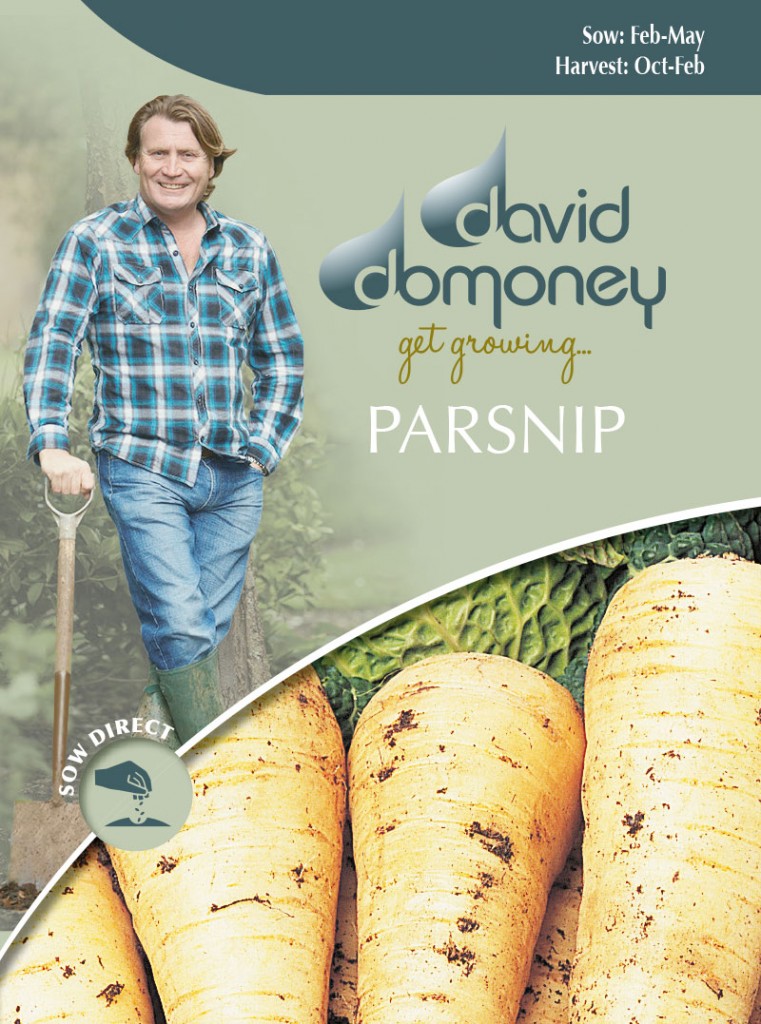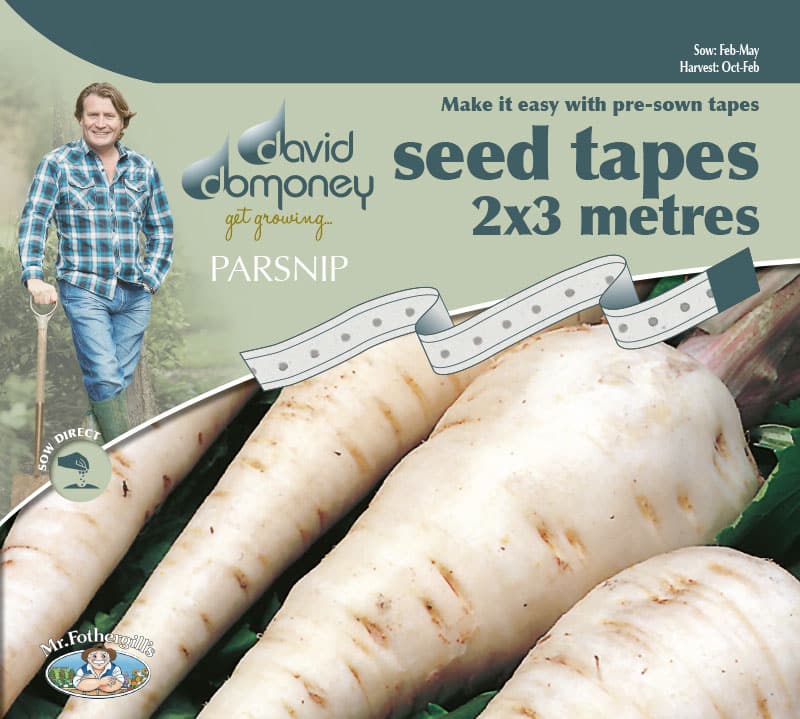Parsnips are a great crop for the veg garden. Easy to grow, with a gorgeous sweet taste when cooked properly. They are also one of the few crops that can stay in the soil over winter.
Long-rooted parsnips need good, deeply cultivated, stone-free soils. There are also short varieties that will grow in any reasonable soil.
Sowing
- Prepare the soil well in autumn
- Rake over the soil surface to a fine tilth in spring. Don’t add manure as this may rot the roots
- Parsnip seed does not remain viable for very long so always sow freshly bought seeds
- Only sow the seeds once the weather has warmed up in spring. Germination is slow in cold weather
- Sow the seeds 2cm deep, 15cm apart in rows 30cm apart
- Sow two or three seeds at a time and thin the seedlings to leave the strongest plant

How to look after me
- Soil: Light, stone-free
- Position: Sunny or light shade
- Location: Outdoors
Did You Know?
Parsnip plants don’t need much nitrogen so you can grow them where a nitrogen-hungry crop like cabbage was grown the previous year
Growing

- Thin seedlings to 10cm apart for long-rooted parsnips or 7cm apart for smaller roots
- Keep the area where the plants are growing weed-free
- Water if a dry spell occurs to prevent the soil from drying out
David’s Top Tip
As parsnips are slow growing, sow a fast catch crop such as radish or lettuce in between the parsnip rows. This also helps to remind you where you planted them!
Pastinaca sativa
A popular, full flavoured variety of parsnip with broad shouldered, smooth roots. These seeds are pre-spaced along a fully biodegradable tape to make sowing really quick, easy and neat. The tape also holds moisture around the seeds to improve germination and seedling survival rates.
David Domoney is a Chartered Horticulturalist, Broadcaster, and Author. David has worked with a number of the UK’s leading garden retailers as a plant buyer and strategic consultant. With more than 30 years experience, in horticulture, David is as passionate about plants now as he was when he bought his first plant at a village fete.






Leave A Comment